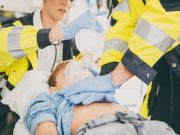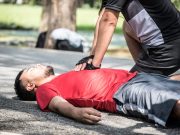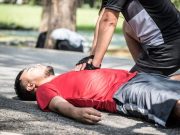Tag: CPR
Speed of Resuscitation Critical to Survival Outcomes After Cardiac Arrest Events
Predictors of in-hospital mortality include worse LVEF, longer time to return of spontaneous circulation, older age
CPR Coach Training Boosts Coach Presence on Code Teams in Pediatric ICU
Clinically significant improvements also seen in some metrics of quality CPR delivery in real cardiopulmonary arrests
Social Factors Influence Pediatric Out-of-Hospital Cardiac Arrest Outcomes
Decreasing trends in performance of bystander CPR, AED use, ROSC seen with minority status, poverty levels
Disparities in Improved Survival Linked to Bystander CPR
All individuals have higher survival with bystander CPR, but the association is weakest for Blacks and women
Time-Dependent Probabilities of Favorable Outcomes Examined After CPR
For patients with in-hospital cardiac arrest, probabilities of favorable outcomes decrease with duration of CPR
AHA: Lung Inflation Occurs Infrequently With Ventilation During 30:2 CPR
Better outcomes seen for patients with ventilation waveforms in ≥50 percent of pauses in CPR
Memories Reported by Some Patients Undergoing CPR for Cardiac Arrest
Normal EEG activity consistent with consciousness emerged as long as 35 to 60 minutes into CPR despite marked cerebral ischemia
ESC: Bystander Defibrillation Improves Out-of-Hospital Cardiac Arrest Survival
Effect was significant even for EMS response times as short as two to four minutes
Survival Lower for Asian Versus White Individuals With OHCA
Despite similar rates of bystander CPR, survival to discharge and favorable neurological survival are lower for Asians
Activation of Volunteer Response System Beneficial for OHCA
Chance of bystander CPR, bystander defibrillation, 30-day survival higher with activation of volunteer response system














